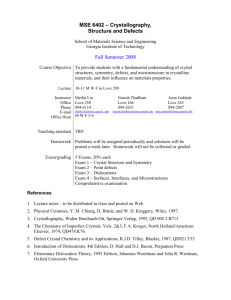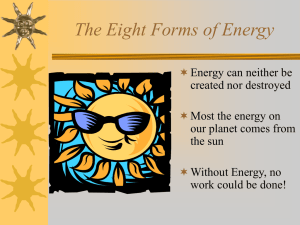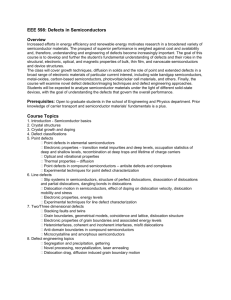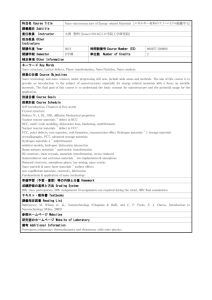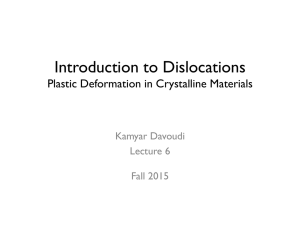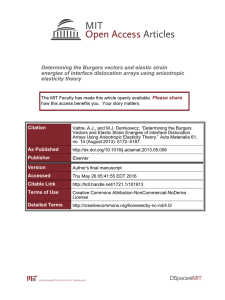Classical Field Theory of Materials (CFTM1)
advertisement
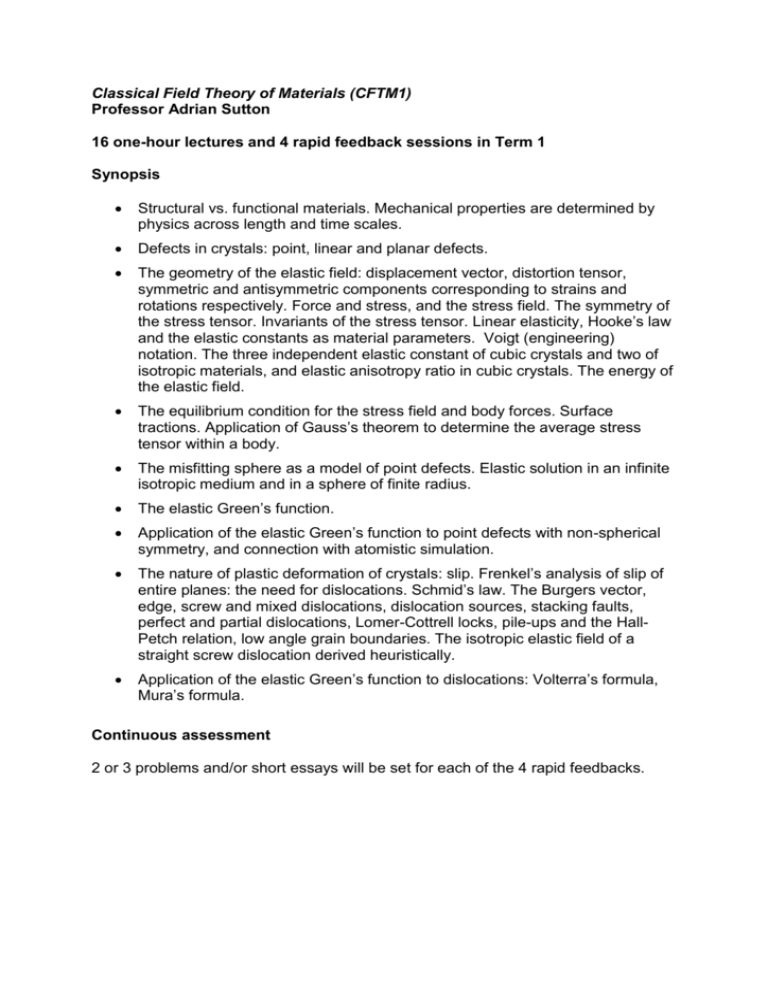
Classical Field Theory of Materials (CFTM1) Professor Adrian Sutton 16 one-hour lectures and 4 rapid feedback sessions in Term 1 Synopsis Structural vs. functional materials. Mechanical properties are determined by physics across length and time scales. Defects in crystals: point, linear and planar defects. The geometry of the elastic field: displacement vector, distortion tensor, symmetric and antisymmetric components corresponding to strains and rotations respectively. Force and stress, and the stress field. The symmetry of the stress tensor. Invariants of the stress tensor. Linear elasticity, Hooke’s law and the elastic constants as material parameters. Voigt (engineering) notation. The three independent elastic constant of cubic crystals and two of isotropic materials, and elastic anisotropy ratio in cubic crystals. The energy of the elastic field. The equilibrium condition for the stress field and body forces. Surface tractions. Application of Gauss’s theorem to determine the average stress tensor within a body. The misfitting sphere as a model of point defects. Elastic solution in an infinite isotropic medium and in a sphere of finite radius. The elastic Green’s function. Application of the elastic Green’s function to point defects with non-spherical symmetry, and connection with atomistic simulation. The nature of plastic deformation of crystals: slip. Frenkel’s analysis of slip of entire planes: the need for dislocations. Schmid’s law. The Burgers vector, edge, screw and mixed dislocations, dislocation sources, stacking faults, perfect and partial dislocations, Lomer-Cottrell locks, pile-ups and the HallPetch relation, low angle grain boundaries. The isotropic elastic field of a straight screw dislocation derived heuristically. Application of the elastic Green’s function to dislocations: Volterra’s formula, Mura’s formula. Continuous assessment 2 or 3 problems and/or short essays will be set for each of the 4 rapid feedbacks. Books Elasticity C Teodosiu, Elastic models of crystal defects, Springer (1982). This is an excellent book on elasticity oriented towards defects in solids. It has just been brought back into print and three copies have been ordered for the CDT library. It is a good book to learn from because it is rigorous without being pedantic, and it is a book you will return to in later years because it is a mine of information. Dislocations D Hull and D J Bacon, Introduction to Dislocations, Pergamon (1992). This is a very readable introduction to dislocations in solids. J Weertman and J R Weertman, Elementary dislocation theory OUP (1992). Another very readable introduction to dislocations in solids. Elasticity, defects A H Cottrell, The mechanical properties of matter. This is a very clear introduction to the subject, written by possibly the finest metallurgist of all time. More advanced books R J Asaro and V A Lubarda Mechanics of of solids and materials, Cambridge University Press, (2010). This is a comprehensive and fairly advanced text. T Mura Micromechanics of defects in solids, Kluwer (1991). This is an advanced text, but very useful and well written, and directly related to Eshelby’s work. J D Eshelby, The continuum theory of lattice defects, Vol 3 of Solid State Physics, eds. F Seitz and D Turnbull, p.79 (1956), in Collected works of J D Eshelby eds. X Markenscoff and A Gupta, Springer (2006). Eshelby is a towering giant in this field. His papers are very deep and beautifully written. You could spend a lifetime studying the 58 papers in his collected works. J P Hirth and J Lothe, Theory of dislocations, Krieger (1992). This is an advanced treatise on dislocations in solids. Chapter 2 is a good introduction to Elasticity.


